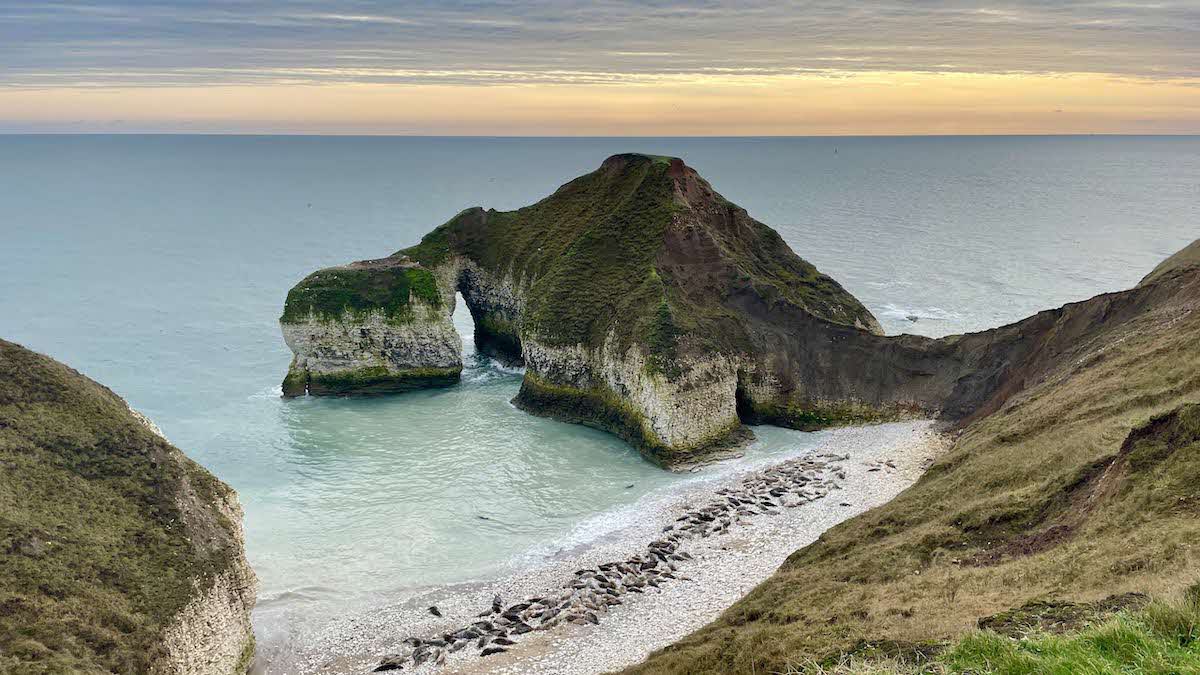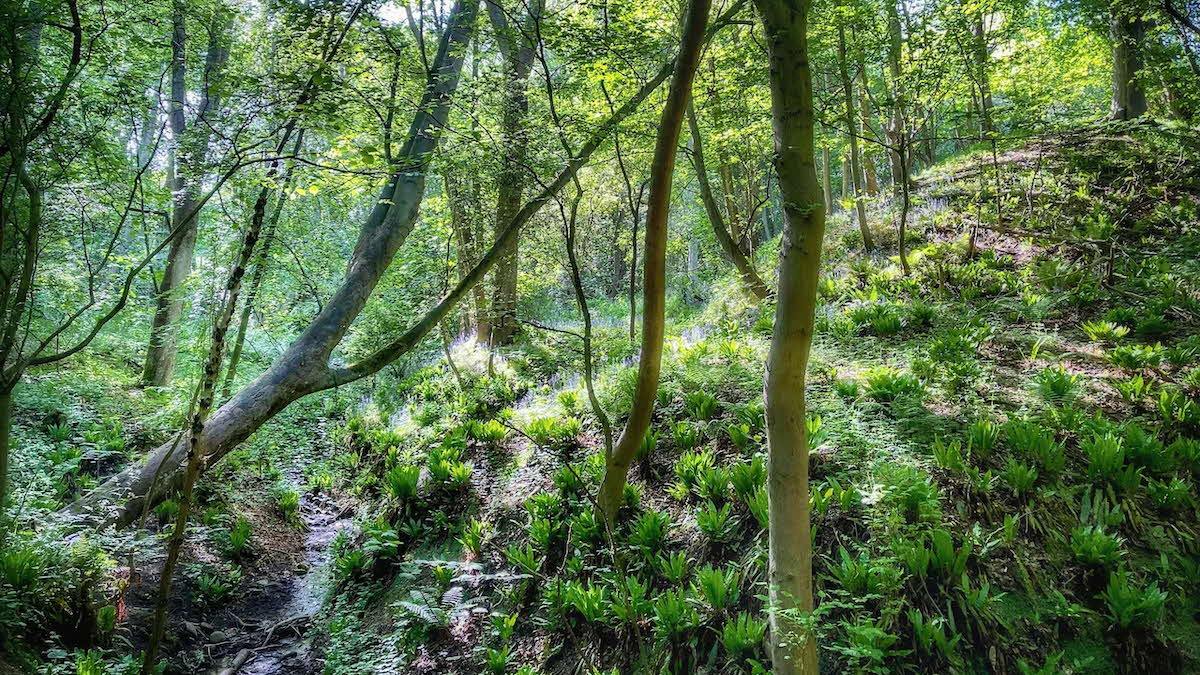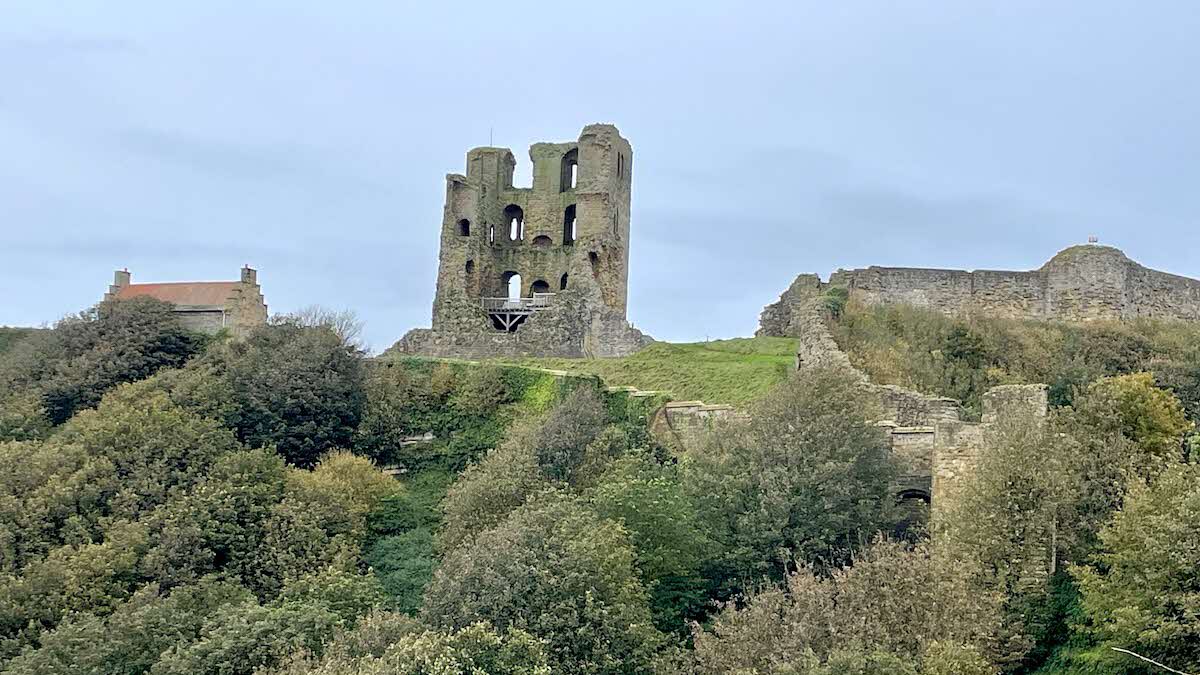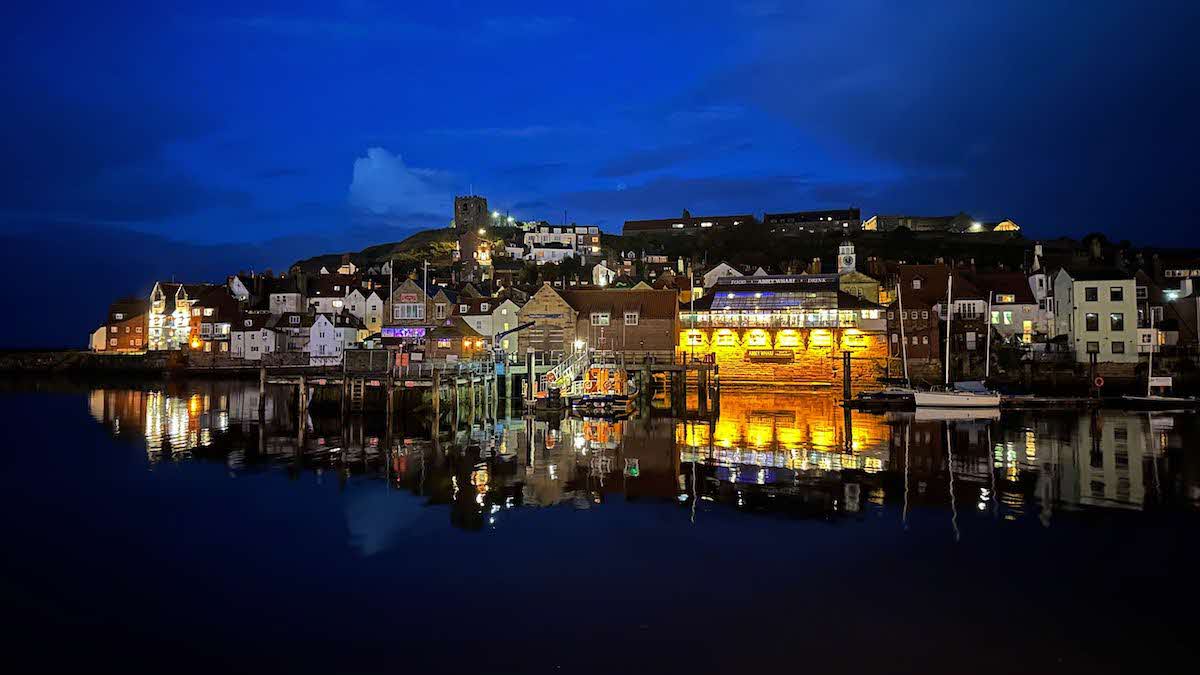Yorkshire
 Enjoy the beautiful, North Yorkshire Moors; the rolling Yorkshire Dales; picturesque harbours and sandy seaside resorts on the east coast; or venture into great cities like Leeds and Bradford.
Enjoy the beautiful, North Yorkshire Moors; the rolling Yorkshire Dales; picturesque harbours and sandy seaside resorts on the east coast; or venture into great cities like Leeds and Bradford.
Whether you tour with binoculars or a bucket and spade, the East and North Yorkshire coastline is rich with delights. Jonathan Manning takes a hit of sea air
 Flamborough Head. Photo by member Rebecca Harrison
Flamborough Head. Photo by member Rebecca Harrison
High above my pitch, a small skein of geese fights a north-easterly on its way to the coast. Do the birds get as excited about their first glimpse of the sea as holidaymakers do? Their calls are lost in the wind, but their offset V-formation suggests some of the geese have broken rank as the beach comes into view.
Being the first to spot the sea was treated with the seriousness of an Olympic sport on my childhood holidays and, four decades later, I still find myself staring down lanes, over rooftops and through field gates anticipating the thrill of spying a horizon where sky meets wave.
The northern outskirts of Bridlington provide this gleeful moment on a tour that will follow the coast northwards, from the East Riding of Yorkshire to North Yorkshire. It’s a distance of less than 40 miles but, as is so often the case in the UK, the landscapes feel like two different worlds.
Here at the southern start point, the cliffs are chalk, washed clean by wind, tide and rain as if in a washing powder challenge with the famous white cliffs of Dover. Farther north at Whitby, black jet is washed up at the foot of soft boulder clay cliffs. Inland, too, the world changes from agricultural farmland to the wild North York Moors. As a slogan on a gift shop T-shirt declares, “Reyt lucky to have this ont doorstep!”
Basecamp for the first night is Bridlington Club Campsite, an immaculate location with 149 pitches set over 30 acres. A football commentator might describe it as a site of two halves – one open and sunny, albeit exposed, and the other more sheltered and leafy. The storage facility sees some caravanners tow their ’vans no farther than compound to pitch, and who can blame them? The nearest beach is barely 15 minutes’ walk away, and the coastal path continues uninterrupted north and south.
 Sewerby Hall. Photo by member Chris Baldock
Sewerby Hall. Photo by member Chris Baldock
It’s an even easier stroll to Sewerby Hall and Gardens, where a Grade I listed Georgian house showcases furniture from the Victoria and Albert Museum and offers spellbinding sea views. The house is owned and run by the local authority, which keeps the 50 acres of gardens and woodland in tip-top condition. The walled garden is particularly impressive, and there’s a small zoo, too. From Easter to September a road train connects Sewerby to the resort town of Bridlington, a fun alternative to the bus service that runs from the campsite.
 Danes Dyke. Photo by member Katie Dudley
Danes Dyke. Photo by member Katie Dudley
It’s only walking distance to the next stop on this tour, High Breame Certificated Location (CL), which is virtually opposite a woodland walk through a ravine to Danes Dyke. Broadleaf trees provide a canopy above a forest floor that changes with the calendar from winter snowdrops to spring bluebells and autumnal fungi.
The plant life is pretty, but no more than an hors d’oeuvre for the main event - the secluded beach, from where the coastal path and an imposing line of cliffs extend in both directions.
To the north nestles Flamborough, a village so keen on lighthouses that it built two. The older one is an octagonal chalk tower, constructed in 1674, that stands on the highest point in the area. The newer Flamborough Head lighthouse is closer to the shoreline, beaming out its characteristic two white flashes followed by a red flash. A steep, stepped footpath leads down to the beach for anyone recording their ‘stairs’ count or just needing to walk off lunch from Lighthouse Fisheries of Flamborough, voted Best Newcomer at the National Fish and Chip Awards 2023.
At sea level the waves have carved walk-in caves below cliffs that welcome one of the most important seabird colonies in Europe. In summer, Flamborough Head becomes a metropolis of gannets, gulls and puffins, whose life on the edge creates a double-whammy assault on ears and nostrils.
Three miles farther along the coast path, at Bempton Cliffs RSPB reserve, half a million seabirds gather to breed between March and August. A friendly warden encourages me to look out for seals, porpoises, dolphins and even minke whales, but I fail to spot a single fin as I scan the horizon through binoculars.
Journeying north, I pass the county sign for North Yorkshire and make a beeline for Cayton Village Club Campsite, barely a mile from the extraordinary beach at Cayton Bay. It’s a magnificent sweep of sand with abundant space for bucket-and-spaders, sunbathers, surfers and fossil-hunters, as well as a shack-style café with one of the finest coastal views in the country.
The campsite is a short walk from Cayton village, where two pubs come highly recommended by the site staff. And if a saunter down the road feels like too much of an effort after a day digging sandcastles, a fish and chip van visits on a Saturday. Strolling around the pitches, I stop to chat to Steve, who has chosen to stay at Cayton Village for his first caravanning trip in years, while his son has hired one of the funky, self-contained glamping pods, perfect for accommodating extended family. “I’ve got happy memories of holidaying in the area, and the site is lovely,” says Steve. Site Manager Ryan tells me to look out for the ‘mugger’, which stops me in my tracks until he explains it’s a MUGA – multi-use games area – with goals and basketball hoops!
 Scarborough Castle
Scarborough Castle
A £2 bus ticket whisks campers from Cayton into Scarborough, a seaside town that still exerts major pulling power. Blondie, Olly Murs and Sting played live at the Open Air Theatre in 2023, and Status Quo, Jess Glynne and Deacon Blue are scheduled for 2024. Fingers crossed they enjoy better weather than today. The only people on Scarborough’s vast beaches are surfers in North Bay, while holidaymakers cluster along the South Bay with its harbour, candy floss and arcades.
Up on the rocky promontory that divides the two bays, the ruins of 12th-century Scarborough Castle boast the best view in town. New research suggests that the name Scarborough may be an Anglo-Saxon derivation of ‘the hill with the fort’, rather than an Old Norse name, as has historically been favoured. The Vikings certainly came under the watchful eye of the first fortresses on the site, and the current castle faced Tudor rebels, the Civil War’s Parliamentary army and even the German navy.
Thirty seconds’ walk from the gatehouse lies the grave of author Anne Brontë, sister to Charlotte and Emily. It’s a shrine for fans of the novels Agnes Grey and The Tenant of Wildfell Hall, as well as for anyone in the shadow of more successful siblings.
Scarborough West Ayton Club Campsite, which sits about four miles inland, has a gleaming new facilities block with dishwashing facilities and laundry, an improved games room with pool and ping-pong tables, and a playground featuring a fantastic slide as well as a MUGA.
Most eye-catching of all are the new fully-serviced premium pitches, complete with picnic benches and barbecue stations. There’s an attractive, organic feel to the layout of this leafy, chilled-out site, with pockets of pitches rather than a long parade, and the five-mile perimeter walk should delight any dogs.
On previous tours I’ve enjoyed cycling the final stretch of this tour, following the Cinder Track (a former railway line) from Scarborough to Whitby. But under soaking cloud, I let the towcar take the strain, driving through hilly moorland to the North Yorkshire Moors Club Campsite.
Basking in the glory of winning the Club’s 2023 Sites to Inspire Award (single-couple), this idyll sits inside a protective woodland cordon amid the rough grazing and heather of the moor. Deer, hares, woodpeckers and owls shelter here, and there’s a pervasive sense of peace.
 Whitby near North Yorkshire Moors Club Campsite. Photo by member Catherine Cope
Whitby near North Yorkshire Moors Club Campsite. Photo by member Catherine Cope
Halloween is just around the corner when I visit, and where better to celebrate than Whitby, the ruins of its Gothic abbey peering down on the town. In 2022, the town hosted a record-breaking number of people (1,369!) dressed as vampires to celebrate the 125th anniversary of Bram Stoker’s iconic novel, Dracula, which was inspired by the abbey.
Whitby appears to have found its 21st-century mojo, with weekend after weekend of event and festival, featuring everything from crafts and folk music to steampunk and ghosts.
For this half-term week, Whitby Abbey will be dramatically illuminated. The streets are packed with visitors browsing and shopping in quirky, independent stores selling the likes of costumes, jet jewellery and tempting confectionery. Whitby is truly thriving.
Fishing boats bob in the harbour, protected from the heavy waves crashing into the pier, and lifeboats stand ready on the slipway. At Whitby Lifeboat Museum, a captivating black-and-white film shows a practice drill by the Robert and Ellen Robson, a 12-oar rowing lifeboat that was in active service until 1955. The boat itself stands just below the screen, its deck open and exposed, the bravery of its crew writ large.
Boat trips have proved popular with Club members this summer, says site manager Karen, with campers heading out to sea on fishing jaunts as well as dolphin- and whale-watching expeditions.
Closer to home, 90-minute walks from the site loop past Falling Foss Waterfall, while more adventurous walkers can join the final section of the Coast to Coast Path, England’s newest national trail, to reach the sea at Robin Hood’s Bay.
It is the end of the tour, but as I glance skywards over the bonnet I catch sight of another skein of geese, heading for somewhere safe to spend the night. Just like the migratory wildfowl, I’ll be back here again soon.
 Enjoy the beautiful, North Yorkshire Moors; the rolling Yorkshire Dales; picturesque harbours and sandy seaside resorts on the east coast; or venture into great cities like Leeds and Bradford.
Enjoy the beautiful, North Yorkshire Moors; the rolling Yorkshire Dales; picturesque harbours and sandy seaside resorts on the east coast; or venture into great cities like Leeds and Bradford.